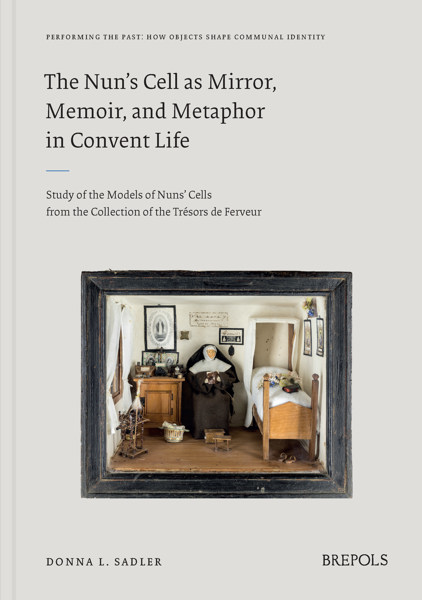The Nun’s Cell as Mirror, Memoir, and Metaphor in Convent Life
Study of the Models of Nuns’ Cells from the Collection of the Trésors de Ferveur
Donna Sadler
- Pages: 242 p.
- Size:178 x 254 mm
- Illustrations:124 col.
- Language(s):English
- Publication Year:2023
- € 95,00 EXCL. VAT RETAIL PRICE
- ISBN: 978-2-503-60193-9
- Hardback
- Available
- € 95,00 EXCL. VAT RETAIL PRICE
- ISBN: 978-2-503-60194-6
- E-book
- Available
A closer look at nuns’ cells, their relationship to the miniature scale of dollhouses, and the power of possessions to narrate the life stories of the sisters who curated their devotions for posterity.
- "Sadler focuses on an extraordinary collection of miniatures constructed by cloistered women. Her introduction is remarkably lucid and enables the reader to quickly assess the richness of the study despite what might seem a narrow focus."
“This is an intriguing, delightful book, full of wise insights that heighten the reader’s curiosity and impel her to look ever more carefully at the beautifully reproduced photographs of the nuns’ cells, pondering their meaning and what they might teach the reader today. ” (Claire Gilbert, in Art & Christianity, 117, Spring 2024)
Donna L. Sadler is Professor of Art at Agnes Scott College. She has published widely on piety and late medieval altarpieces, the representations of Christs’s entombment and the reverse Façade of Reims Cathedral. She has also worked on the patronage of Louis IX, Philip the Bold, the depiction of dogs on tomb sculpture, and anthropological views of monuments. Recently she has turned her attention towards the study of miniature simulacra of nun’s cells and how these objects could convey devotion, memory and shared values.
In the eighteenth through the early twentieth century, French nuns from various orders created miniature simulacra of the cells in which they slept, studied, and performed their devotions. Each diorama contains an effigy of the nun, a prie-Dieu, devotional objects such as a crucifix, handiwork, and artifacts to foster study and contemplation. This book examines the lives of the brides of Christ as depicted in these dioramas, proposing that the material objects found in the chambers trace the contours of the collective and individual identities of the nuns who created these cells. Viewed as a type of memoir, the cells furnish the sisters a stage upon which to rehearse the meaning of their lives. The dioramas create a tension between the private and public presentations of the self, between verisimilitude and self-fashioning, and between reality and representation. The book contextualizes the miniature cells within the larger discourse of gender, identity, self-representation, monastic devotion, and the power wielded by the aesthetics of scale.

